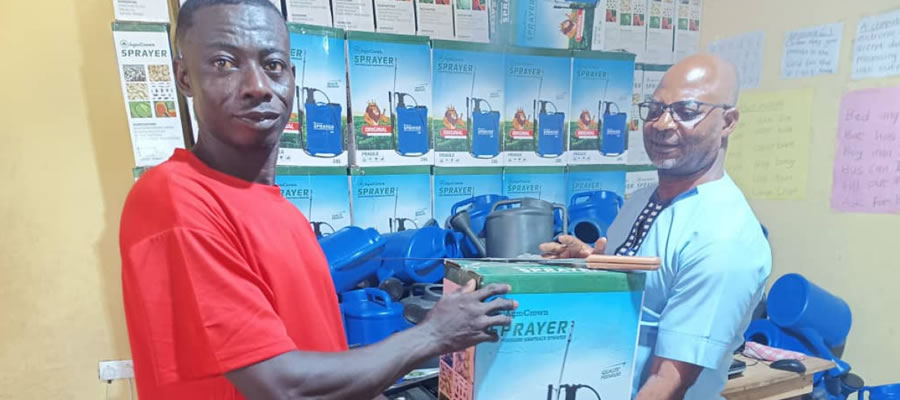

Main Source of water for drinking and for other domestic use
As shown in Table 8.9 and Figure 8.2, the main source of drinking water in AAK district is bore-hole/tube accounting for 32.2 percent While 25.6 percent use public tap/standpipe and 22.7 percent use pipe-borne outside dwelling, only 4.8 percent of households use pipe-borne water inside dwelling as main source for drinking. In the urban areas, 6.7 percent of the households use pipe borne inside dwelling while it is 3.8 percent in the rural. Also 2.7 percent of urban households use unprotected wells compared to 1.2 percent of rural households.
Toilet and Bathing Facilities
As shown in Figure 8.3 and Table 8.9, almost two-fifth of households in the district use public toilet facilities (39.9%), followed by close to one fifth that use pit latrine, and one tenth that uses KVIP. The use of water closet (4.1%) and bucket/pan (0.4%) is less common in the district. Approximately a quarter (23.5%) of households in the district do not have a toilet facility and use bushes, beaches and open fields. It is important to state that although the use of pit latrine has been banned by legislation, quite a high proportion of households (21.3%) in the district still use this toilet facility. The predominant toilet facility in rural areas is public toilets (45.3%). Households that do not have a toilet facility and use bushes, beaches and open fields are more in the urban areas (34.6%) than rural (17.6%).
Table 8.10 further presents the percentage distribution of bathing facility in the district. Three bathing facilities are most widely used: shared separate bathroom in the same house (29.7%); own bathroom for exclusive use (22.2%); and the shared open cubicle (17.2%). While shared separate bathroom in the same house is the most common bathroom facility in urban areas, own bathroom for exclusive use is the most widely used in rural areas.
Method of Waste Disposal
Solid waste
Table 8.11 shows that for 71.3 percent of households in AAK district, their rubbish is dumped in open spaces. For the rest of the households the method of waste disposal is by burning (9.2%), public dump containers (8.7%), indiscriminate dumping (4.1%), burying (2.4%) and collection (1.1%). Furthermore, for 16.1 percent of households in urban areas their solid waste is disposed in public dump container, while for 58.7 percent of households disposal is in public dump open spaces. Only 1.9 percent of households have their solid waste collected. In the rural areas, 4.8 percent of the households dispose their solid waste in public dump containers, 78 percent dispose in public dump open spaces and only 0.9 percent have their solid waste collected.
Liquid waste
Table 8.11 further shows that 35.1 percent of households throw liquid waste onto compound, 34.5 percent onto the street/outside, 21.6 percent, into gutter, 3.9 percent through drainage system into a gutter and 0.6 percent through a sewerage system. Furthermore, in 32 percent of households in the urban areas liquid waste is thrown into gutters, and only 0.7 percent of households’ liquid waste is disposed through the sewerage system. Additionally, 5.5 percent of urban households dispose liquid waste through the drainage system into a gutter while 28.2 percent throw the liquid waste onto the street or outside. Regarding the rural areas, 39.5 percent of households throw their liquid waste onto the compound, while 37.7 percent throw onto the street or outside. It is in only 0.5 percent of rural households that liquid waste is disposed through the sewerage system.
Date Created : 6/5/2018 4:10:44 AM











 facebook
facebook
 twitter
twitter
 Youtube
Youtube
 +233 593 831 280
+233 593 831 280 0800 430 430
0800 430 430 GPS: GE-231-4383
GPS: GE-231-4383 info@ghanadistricts.com
info@ghanadistricts.com Box GP1044, Accra, Ghana
Box GP1044, Accra, Ghana